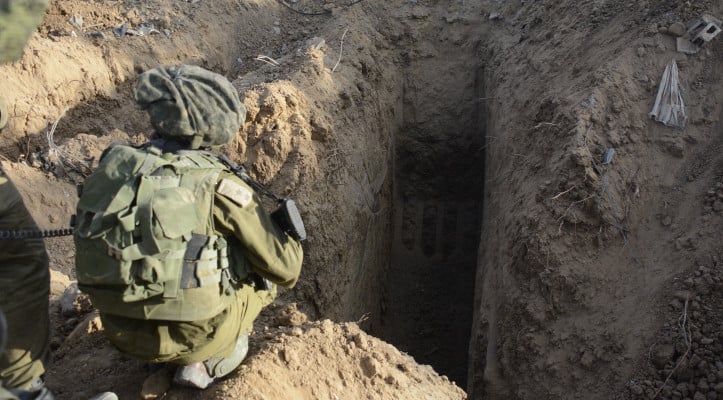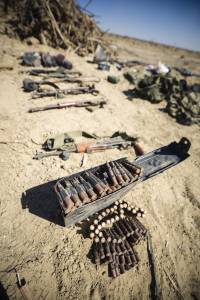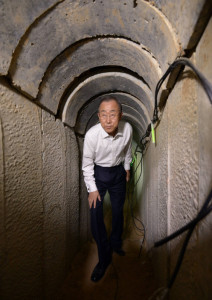Tunnels remain strategically important to Hamas, and Hezbollah may decide to adopt the same approach to terrorizing Israel’s civilians.
The recent destruction of a Hamas tunnel near Kibbutz Nahal Oz underlines the increased threat to Israeli civilians from such tunnels. Hamas attaches great strategic importance to these tunnels, as was revealed during last summer’s Operation Protective Edge. The IDF is concerned that other terrorist organizations, such as Hezbollah, will seek to replicate this model, especially in light of Iran’s resumption of financial support to Hamas.
The threat of terrorist tunnels has returned to prominence over the past several weeks. On Sunday, the IDF stated that it had completed the destruction of a tunnel dug by Hamas as part of a plot to allow 200 gunmen to infiltrate from Gaza into Israel. At the end of January, during a temporary increase in tensions with Hezbollah, the IDF searched for tunnels near Zar’it on the Lebanese border after residents reported suspicious noises in the area.
“We are in complete coordination with the IDF, and every appeal by a resident is seriously investigated by the IDF. As of now, there are no known offensive tunnels and we rely on the IDF, which does and will continue to locate and foil this sort of threat,” said Aviv Leshem, spokesperson of the Upper Galilee Regional Council in a statement to World Israel News.
The strategic advantages of tunnels, despite their high price tag, are many. They are difficult to locate as only the entrances are visible from above ground. In Gaza, Hamas concealed the tunnel entrances inside densely-populated civilian areas. Destruction of tunnels requires a ground operation due to their depth, which protects them from aerial bombardment. They also allow terrorist organizations to bypass Iron Dome, which intercepted an estimated 80% of the rockets fired into Israel.
Protective Edge was launched in response to an escalation in rocket fire from the Gaza Strip, but rapidly transformed into a ground mission to destroy over 30 tunnels discovered by the IDF. Israel estimates that the construction of these tunnels cost around $90 million. Hamas planned to use them to smuggle 200 of its members into Israel for a large-scale attack with the aim of killing or kidnapping as many civilians and soldiers as possible. The tunnels were also used during the war to ambush Israeli soldiers.
Reconstruction of the tunnels began soon after the war concluded. A Hamas journalist at Al-Risalah newspaper visited a tunnel under construction in October, whose diggers he described as “bees in a beehive.” Iranian and Hezbollah-affiliated media report that Hamas has sought to rebuild ties with its former patrons, which were severed when Hamas sided against the Assad regime in Syria. In December, Gazan sources informed Ynet that Hamas was diverting materials intended for post-war reconstruction to build new tunnels.
Egypt is also running an ongoing campaign to blockade and destroy Gaza tunnels, which began after they were used in an attack that killed 16 border police in August 2012. Tunnel destruction sped up after the July 2013 coup d’etat against Mohammed Morsi, with approximately 1,600 tunnels destroyed by the start of Protective Edge a year later.
By: Atara Beck, World Israel News staff






